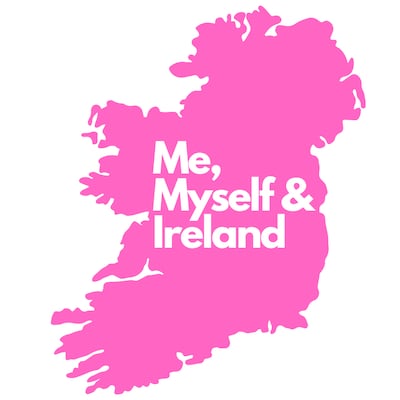In Ireland we always want what we don’t have. When we opened our first restaurant, the Spanish tapas bar Cava Bodega, it became really popular with locals [in Galway]. It reminded them of the warmth and flavours of holidays in Spain. Aniar was a much harder sell back in 2011.

When I’d ask people if they’d like to try contemporary Irish cuisine, they’d say something like: “Oh God, what is that? Is it stew?” When I replied that it was fish, they’d simply say: “I don’t like fish.” The idea was very new and we must have lost €80,000-€100,000 in the first year. We started running cookery classes on Sundays and Mondays to make up the shortfall. We kept them on and now they’re full of locals.
I was born in Clondalkin in Dublin, grew up in Maynooth and went to school in Kildare. I first moved to Galway in 1999 but settled here full time in 2005. Three of my five siblings also live in Galway and my parents retired here. It’s a nice alternative to Dublin. Galway never takes itself too seriously. Five of us went into the restaurant industry, but I don’t know how we all fell into food. We grew up in a very traditional household: fish on Fridays, lamb stew, shepherd’s pie. My mother doesn’t like green vegetables so unlike a lot of Irish mothers, she never cooked cabbage.
I was a bit of a tearaway at school. I dyed my hair blue then I dyed it chilli red. My daughters go to an Educate Together school and every kid has a different hair colour; they’re allowed to express themselves. I remember being asked by a teacher if I was mentally ill after dyeing my hair. Then I was told to come back in a week when it had washed out.
READ MORE
I almost left school after my Junior Cert to become a chef so the idea of cooking was always there, but I went back and did my Leaving Cert. After cheffing in Edinburgh for a year I applied for a mature student allowance and went to UCC to study English and art history. Later I did a master’s in English at NUIG and during the pandemic I completed a PhD in playwriting, then wrote a play about food. I always had these twin ambitions of writing and cooking but for years they felt very separate. My books are an attempt to bring these two spheres together.
[ Gourmet Getaways: The best places to eat and drink on a weekend break in GalwayOpens in new window ]
Samuel Beckett is my favourite writer. I was given one of his books when I was 17 or 18 and it just struck a chord. I moved to Paris shortly after and tried to be a poet. I visited Beckett’s grave and wandered around Montmartre before coming home with my tail between my legs. I still remember the 36-hour bus ride from Paris back to Dublin – there were no cheap flights in the mid-90s.
I think I’m much too Irish to acknowledge my achievements. Externally my life looks successful, but internally you keep pushing forward because you feel you’re not good enough. Even still when I travel to London, I always feel like I’m a tier below. It’s definitely something in me but it’s also part of the Irish psyche. I don’t know if that’s down to colonialism or Catholicism, but I know my kids won’t have it. I think we’re the last generation to suffer from this lack of confidence.
My granny used to say: “What’s the end product of you?” It’s something I’ve always remembered and maybe it put an invisible pressure on me and my brothers and sister to succeed. I want to do the best I can at whatever I apply myself to, but that’s easy when you find your niche. I firmly believe that desire and drive are the key to achievement.
There’s a lot of hard work but also a lot of luck involved in securing a Michelin star. There’s an element of being in the right place at the right time. If getting the star is tough, retaining it is even tougher. You always have to be on top of your game. As someone said, it’s like playing in the cup final every night. For other restaurants, it’s more like playing in the league – you can lose a few.
It’s great to have the star and it brings people in, but for me the most important thing is the hospitality and overall experience. In a lot of Michelin-starred restaurants you leave without having any sense of who’s behind the food. I always try to add in that layer. On the nights I’m working, I like to go out on to the restaurant floor and talk to guests, find out where they’re from, what they’re doing and where they’re going.
[ Michelin-starred restaurants in Ireland, 2024: The complete guideOpens in new window ]
The clientele at Aniar used to be almost all Americans, but since Covid encouraged staycations, we’ve had a lot more Irish customers. We’ve tried to look at Irish food in a new way and we’re very much part of the Nordic food movement. I think seaweed should be one of the signature ingredients people associate with Ireland but historically we lost touch with the sea because the land was so fertile. When I opened Tartare cafe and wine bar, I added dillisk to the potato and leek soup, put seaweed into bread and added kelp to cakes as a way of getting people interested. We’ve got a way to go though and I think I’ll be flying that flag for some time.
In conversation with Marie Kelly. This interview was edited for length and clarity. An Irish Food Story: 100 Foods That Made Us, by JP McMahon, is out now.
















